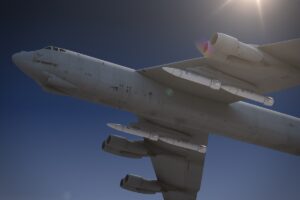
The U.S. Air Force said on July 13 that a prototype Lockheed Martin [LMT] AGM-183A Air-Launched Rapid Response Weapon (ARRW) scored its second booster flight test success on July 12 off the southern California coast. ARRW Booster Test Flight-3 "was the 12th flight for the program and third release demonstration," the Air Force said in a statement. "The AGM-183A weapon system reached hypersonic speeds and primary and secondary objectives were met." On May 14, an Air Force B-52H Stratofortress released…














